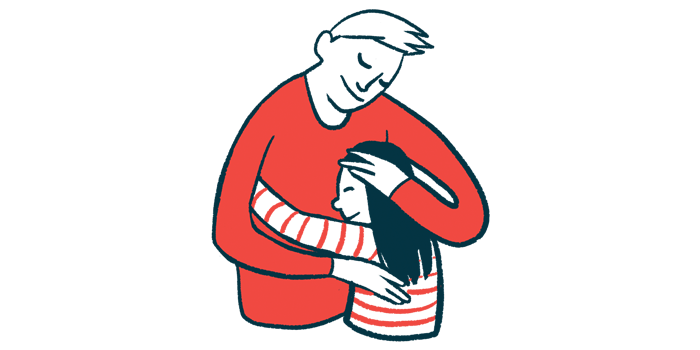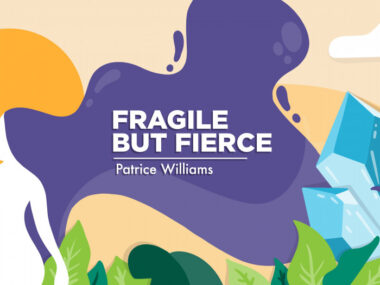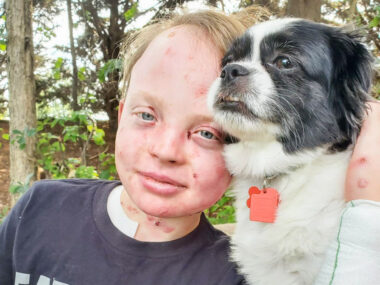Challenges of being a caregiver among many for EB parents: Study
Findings highlight importance of recognizing potential burden of home care
Written by |

Becoming a self-taught provider of home-based skin care is one of the many challenges faced by parents of children with epidermolysis bullosa (EB) — most of whom reported often being the primary caregiver for their affected sons and daughters in an interview-based study from Norway.
Other challenges identified in the new study were balancing the roles of parent and healthcare provider, and acting as gatekeepers to avoid potential EB-related problems to protect their child’s well-being.
“Caring for a child with EB may [involve] practical and emotionally demanding tasks for the parents,” the researchers wrote, calling for greater recognition by clinicians of the challenges for parents — many of which may be overlooked — of being a caregiver.
“It is important that [healthcare professionals] recognize and understand the potential burden of extensive home care these parents experience as part of providing for their child with EB and the family,” the researchers wrote.
The study “When care hurts: parents’ experiences of caring for a child with epidermolysis bullosa,” was published in the Orphanet Journal of Rare Diseases.
In interviews, parents discussed caring for their children with EB
EB comprises a group of conditions marked by fragile skin that easily tears and blisters. Blistering may also occur within the body, affecting the mucous membranes surrounding organs and orifices, including the mouth. Such skin damage can affect many activities of daily living, and oftentimes requires extensive care.
Treatment for EB, which largely takes place at home, consists of preventing blisters and applying dressings to protect wounds and promote healing. Preventive measures include dressing in loose clothing, eating soft foods, and covering hard surfaces to protect fragile skin.
In this report, researchers from institutions in Norway examined the first-person accounts of 15 parents — 11 mothers and four fathers — of 20 children with EB. The team conducted semi-structured interviews to understand how these parents dealt with long-term skin care issues at home, and the impact of EB on the family and daily life.
Among the patients, seven had severe EB — either recessive dystrophic epidermolysis bullosa, known as DEB, or junctional epidermolysis bullosa — and 13 had milder forms of EB. These milder forms were epidermolysis bullosa simplex or dominant DEB.
The resulting data revealed three main themes, and key challenges for parents: becoming a self-taught provider of home-based skin care, balancing roles, and being ahead of potential problems related to their child(ren)’s EB.
Under the theme of becoming self-taught skin care providers, most parents said they lacked knowledge about EB and received little help from healthcare professionals (HCPs). To provide needed care, they learned to manage their child’s symptoms themselves, interpreting different cries to identify pain, and the need to check for new wounds or blisters.
“I knew the difference between crying because of pain and other kinds of crying,” said one mother of a child with severe EB. “I don’t know how, but I just knew when something wasn’t right. I kind of got this feeling.”
Home skin care among key challenges of being a caregiver
The parents also learned to adjust their caregiving as needed, and manage skin care at home, with or without help from HCPs such as home care nurses. Those with children with severe EB reported spending several hours with skincare, and seeking professional help when it became emotionally challenging and time-consuming to carry out such care by themselves.
“Hours went by with taking care of her skin, sometimes half a day,” said a mother of a severe EB child. “In a way, skin care was all there was. I never did anything but taking care of her skin when she was little. I didn’t leave the house for a very, very long time.”
A few parents expressed frustration about the lack of coordinated care their child received, with several nurses coming to their homes and not understanding the regimens in place. Parents also feared that the nurses’ lack of knowledge about EB could harm their child.
Over time, parents taught their children about the condition and how to manage it. They involved them in decisions about their own care, such as choices related to dressing and social interactions, to help build the children’s confidence and readiness for self-care. Parents also had to teach their children how to apply bandages and manage blisters, gradually giving them more responsibility.
“It came to a point where he wanted to do it himself, because it felt safer to pierce a blister himself rather than letting someone else do it,” said a father of a mild EB child.
Parents also had to educate and inform others about their children’s medical condition, to prevent misunderstandings about the symptoms and their effects — such as a child’s cries during skincare. Due to the appearance of the skin due to EB, some parents noted that they were accused of not properly caring for their child.
Balancing roles described the challenges of combining parenting with the responsibility of being, essentially, a caregiver treating a child at home. Many parents found it especially stressful to care for their young child’s skin because the youngster often didn’t understand what was happening. These mothers and fathers often needed to force their child to stay still, which felt abusive and made the child feel unsafe at home.
“We did the skin care ourselves, with lots of screaming and crying,” one father of a child with severe EB said. “I had to hold her hard to keep her still. (…) it felt abusive.”
Clinicians often don’t recognize challenges for parents of being a caregiver
While parents often worried about sibling rivalry because the child with EB was prioritized, most siblings had loving relationships, the researchers found. Still, unaffected siblings often missed out on outdoor activities.
“We have tried our best, but there will be limitations anyhow, since finding an activity that [can] include them both is impossible,” said one mother of a child with mild EB.
Most of the parents, given their dual role as primary caregiver, noted a need for being ahead of all potential challenges. As such, these parents reported serving as gatekeepers of their child’s surroundings, always trying to prevent practical and emotional difficulties.
Some parents of children with mild EB helped their sons and daughters understand that their job choices may be limited due to their condition, leading to feelings of sadness. In contrast, parents of children with severe EB did not discuss this issue.
Our results indicate there may be aspects of caring for a child with EB that can be invisible to [clinicians]. … Nonspecialized [healthcare providers] and allied caretakers [may] not fully understand and recognize the massive caregiving provided by parents, and how this affects the whole family.
Parents often hosted visits at home for easier care, and attended events like birthday parties to ensure their children felt included socially. All the parents said that playing sports was a problem for their child, regardless of the severity of their EB.
“It is OK for her that we attend birthday parties. We have to help her keep an eye on what is happening around her,” a mother of a severe EB child said. “She can’t attend to all activities but at the same time, it’s important for her to be there.”
Lastly, most parents stated that traveling and holidays were a challenge. Holiday planning needed to include short flights and as little walking as possible. Travel to warmer regions also caused more blistering, the parents noted.
Taken together, the parents’ reports illustrate the many challenges of caring for a child with EB, regardless of disease severity.
“Our results indicate there may be aspects of caring for a child with EB that can be invisible to [clinicians],” the researchers wrote, noting that “nonspecialized HCPs and allied caretakers [may] not fully understand and recognize the massive caregiving provided by parents, and how this affects the whole family.”
Given that, “HCPs should have a holistic approach in caring for individuals with EB, and recognize the practical and emotional burdens these parents meet,” the team wrote.








